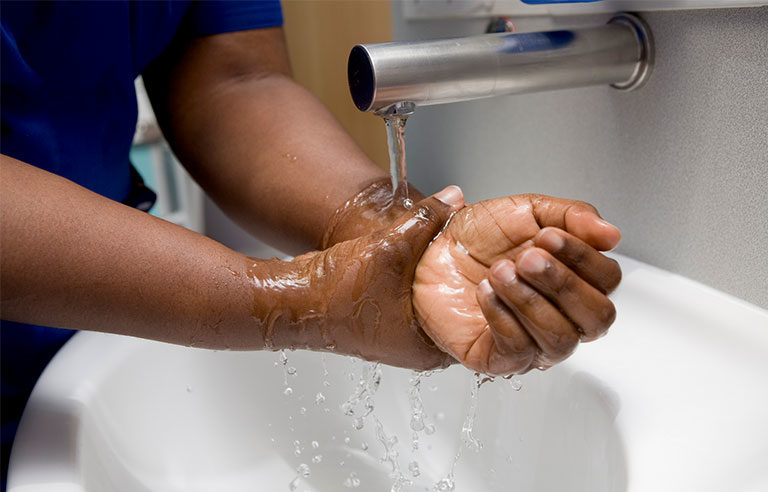Protect employees from MRSA

To best understand what Methicillin-resistant Staphylococcus aureus – also known as MRSA – is, you first need to know what S. aureus is.
S. aureus is a type of bacteria found on the skin and in the noses of healthy people that can cause an infection, NIOSH notes. This type of infection is not unusual for people to contract, and it generally causes minor side effects, such as pustules and boils. However, in some cases S. aureus infections can cause serious problems, including blood infections and pneumonia – and can be fatal.
MRSA refers to a specific type of staph infection that is resistant to the antibiotic Methicillin, and is often resistant to other antibiotics.
Staph infections, including MRSA, are sometimes contracted by health care workers who have weakened immune systems. However, anyone can contract these infections, which often manifest as pimples or boils that can be painful, red and swollen, and have pus or drainage, NIOSH states. MRSA is most commonly transmitted via direct contact with skin or with shared items or surfaces. See your health care provider immediately if you suspect you have a MRSA infection.
According to NIOSH, the five factors that make MRSA easily transmittable are:
- Crowding
- Frequent and direct skin-to-skin contact
- Compromised skin (a cut or scratch)
- Contaminated surfaces and items
- Lack of cleanliness
NIOSH states that people with MRSA “should not be routinely excluded from work” unless directed by their health care provider. However, those workers should be excluded if their wound is draining pus and cannot be covered and contained by a bandage. In addition, anyone with an active infection should not perform any task that involves skin-on-skin contact with the infected area until the wound heals.
To help prevent the spread of MRSA, NIOSH recommends a number of steps, including:
- Ensure wounds are covered at all times with a clean, dry dressing.
- Regularly and thoroughly wash your hands – especially after touching or changing bandages.
- Refrain from sharing personal items, including uniforms, towels, personal protective equipment and razors.
- Thoroughly cleanse and disinfect potentially contaminated surfaces or tools.
For more information about MRSA, including photos of MRSA infections, treatment options and additional prevention tips, visit www.cdc.gov/niosh/topics/mrsa.

